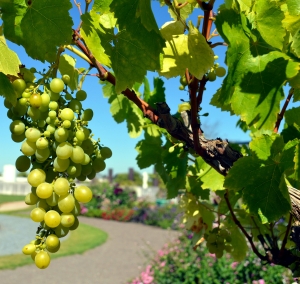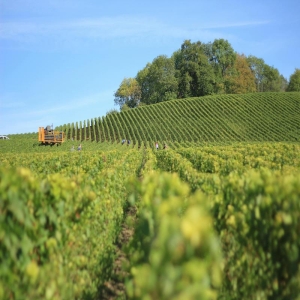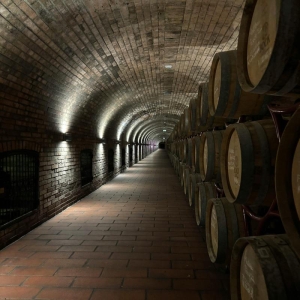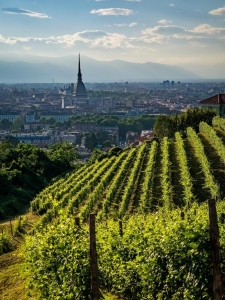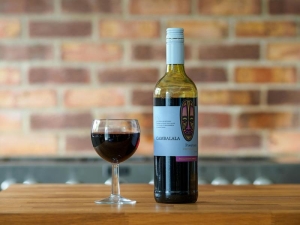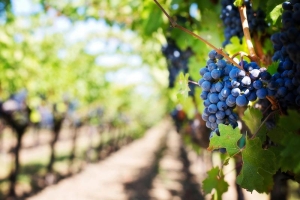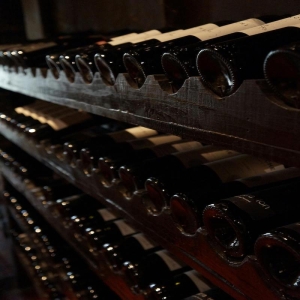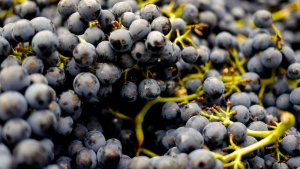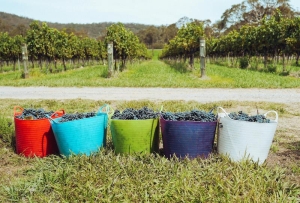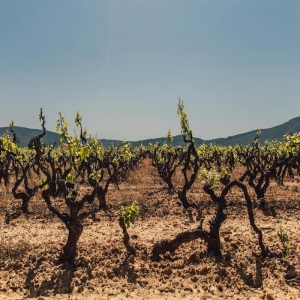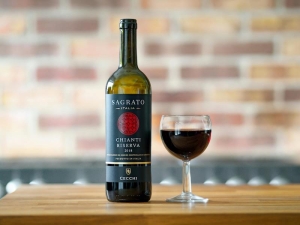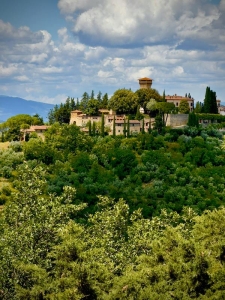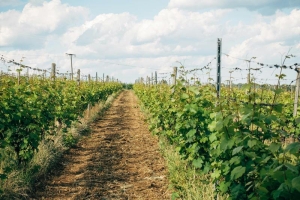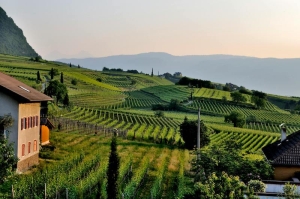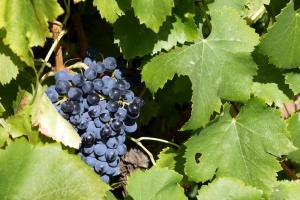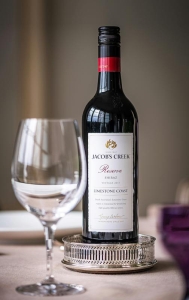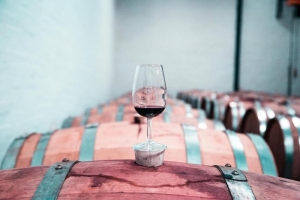Every year on October 14th wine lovers gather to celebrate International Prokupac Day, a day to honour Prokupac, Serbia’s indigenous red grape. For centuries this grape has been an integral part of Serbian wine culture but only in recent years it has started to get the recognition it deserves on the global scene. As more and more people fall in love with it, Prokupac is becoming a symbol of Serbian winemaking tradition and innovation.
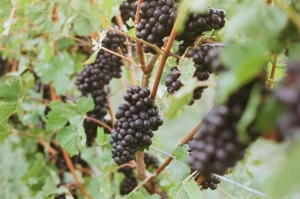
What is Prokupac?
Prokupac (pro-kuh-pats) is a Serbian indigenous red grape variety that has been grown for over 1,000 years. It is known for its ability to adapt to Serbia’s different terroirs, it is mostly grown in the Župa region but it can be found in many parts of Serbia. Historically it was used for rosé wines or blended with other varieties but in recent years it has found its own as a premium grape for high quality red wines.
Prokupac wines are described as elegant and rustic with bright acidity and refreshing and food friendly. Tasting notes include red and dark berries like raspberries, cherries and blackberries and earthy and spicy nuances. The best Prokupac wines can have both juicy fruitiness and complexity so it’s a versatile wine for many dishes.
A Short History of Prokupac
The story of Prokupac is deeply rooted in Serbian viticulture, with roots over 1,000 years old. Although the exact origin of Prokupac is not known, it’s believed to have been grown in the region now known as Serbia since Middle Ages. The grape is thought to have taken its name from the town of Prokuplje which has been a viticultural centre for centuries.
Prokupac was a mainstay in Serbian vineyards and was used for simple fruity wines. During the Ottoman Empire which ruled over Serbia for many centuries Prokupac was widely grown and consumed. The grape’s ability to adapt to Serbia’s different terroirs made it a favourite among local farmers. Records from 19th century show that Prokupac was one of the most planted grape variety in Serbia, used for red and rosé wines. It was often blended with other grapes, mostly Cinsault to make everyday wines.
The 20th century was a time of big changes in Serbian winemaking, influenced by world events and modern agriculture. After World War II the focus was on growing international grape varieties like Cabernet Sauvignon and Merlot which were seen as more commercial. As a result Prokupac’s presence in Serbian vineyards started to decline and many vineyards were uprooted or replanted with foreign varieties.
But in the second half of the century there was a resurgence of interest in indigenous grapes including Prokupac. In the 80s and 90s a small group of visionary winemakers started to see the potential of this native grape and Prokupac was reborn. These pioneers were committed to preserving Serbian winemaking tradition while producing high quality wines that would show Prokupac’s character.
By 2000s Serbian wine industry was going through a transformation, modern winemakers were going back to traditional methods and trying to elevate Prokupac. This was part of a bigger European trend to rediscover and promote indigenous grape varieties. Prokupac was being vinified as a single varietal and showing its potential and versatility to make great wines.
In 2009 Prokupac grape was officially recognized as a protected designation of origin (PDO) grape, which means it’s an important part of Serbian viticulture. This has further promoted the grape and more investment and interest in Prokupac from local and international wine producers.
Today Prokupac is celebrated not only for its taste but also for being part of Serbian heritage. It’s a pride for winemakers and wine lovers alike, a connection to Serbian winemaking tradition. International Prokupac Day is a platform to promote this grape and encourage more wine lovers around the world to try and enjoy Prokupac wines.
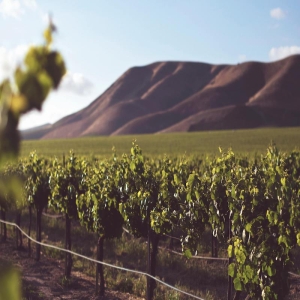
International Prokupac Day
International Prokupac Day was established in 2016 by a group of Serbian wine producers and wine lovers to promote their native grape on international level. The purpose of this day is to promote Prokupac’s history, show the quality of the wines made from this grape and inspire consumers and winemakers to try and enjoy it. By dedicating a day to Prokupac Serbia’s wine industry wants to promote the grape and encourage wine lovers around the world to taste and enjoy it.
While Prokupac is still not well known outside of Serbia, the celebrations on International Prokupac Day are spreading to other countries as sommeliers, importers and wine influencers are discovering the grape. The day is a reminder that Prokupac is not just a part of Serbia’s past but also a part of its future as a wine producing country.
Prokupac Flavor Profile
Prokupac flavor profile can vary depending on the region and winemaking techniques but generally produces wines with bright acidity, moderate tannins and juicy fruit flavors. Here are some tasting notes to expect in Prokupac wines:
- Fruit: Prokupac wines have lots of red fruit flavors like cherries, strawberries and raspberries. In some cases you’ll also find darker fruits like blackberries or plums.
- Spice and earth: Beyond the fruit Prokupac wines have notes of spice, pepper and herbs. Older or more structured wines can develop earthy and leathery characteristics over time.
- Elegance and balance: One of Prokupac’s key characteristics is bright acidity which balances the fruitiness of the wine. It’s a great food wine, can cut through rich dishes and pair well with lighter food.
Prokupac wines can be light and easy drinking or full bodied and complex. Younger Prokupac wines are fresh and fruity while older wines or those aged in oak are more structured.
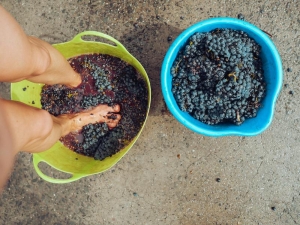
Prokupac Future
In recent years Prokupac has become a focus for many Serbian winemakers who want to promote this grape both at home and abroad. The trend towards low intervention and natural winemaking also helped to revive the grape as Prokupac is very adaptable and a great candidate for these styles of production. Producers are experimenting with different techniques, oak aging and amphora fermentation to show the versatility of the grape.
Outside of Serbia Prokupac is starting to appear on international wine lists and shelves thanks to the efforts of importers and sommeliers who see the potential of this high quality wine that’s different from the usual international varieties.
Conclusion
International Prokupac Day is not only a celebration of a grape but of Serbia’s wine heritage and tradition. Prokupac is more than a wine, it’s a symbol of resilience, innovation and national pride. As more people discover this unique and versatile grape,

